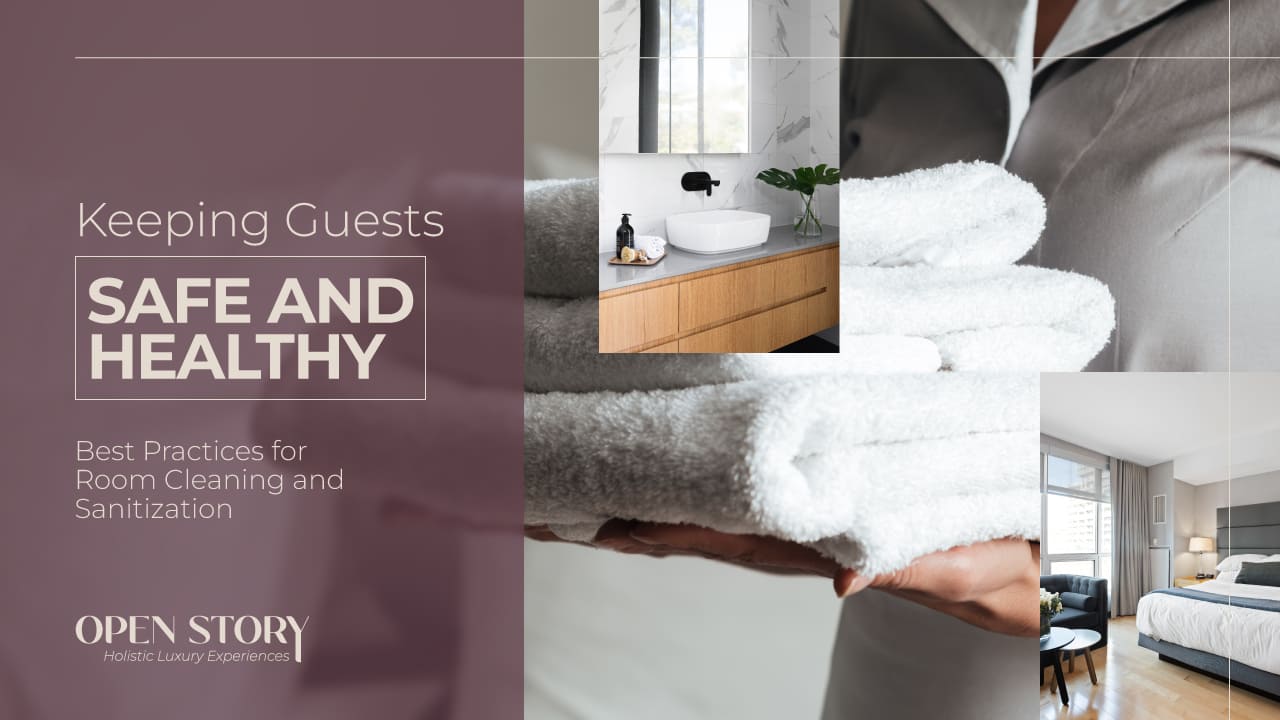The hotel industry in the United States was heavily impacted by the COVID-19 pandemic, which greatly concerned travelers in terms of health and safety. It was with this in mind that hotels had and have had to implement new measures to ensure that their guests are protected and feel comfortable and safe. One of the most important measures has been the implementation of rigorous room cleaning and sanitization protocols. In this article, we will discuss the best practices for cleaning and disinfecting rooms to keep guests safe and healthy as implemented by high-quality hotels.
To ensure a clean and safe guest room, hotels use cleaning products approved by the United States Environmental Protection Agency (EPA). These products have been tested and proven effective against the virus that causes COVID-19. When selecting cleaning products, staff selected for these tasks usually carefully review the labels to understand and follow the instructions carefully. For example, some products require a certain amount of time to remain on the surface to be effective, while others may need to be rinsed with water.
High-contact surfaces, such as door knobs, light switches, and remote controls, are areas that many people frequently touch and therefore have a higher risk of transmitting germs or appearing dirty. These surfaces are frequently disinfected and cleaned using EPA-approved cleaning products. Hotels also often provide guests with disinfectant wipes or sprays so that they can clean these surfaces themselves if they wish.
Proper cleaning techniques are important for effective cleaning and disinfection. When cleaning a room, hotels typically start from the cleanest areas and move towards the dirtiest. This means starting with surfaces that have been touched the least, such as the bathroom sink, and ending with surfaces that have been touched the most, such as the door handle, in order to devote the most time to those areas that require it. Different individual cloths are also used for different surfaces to avoid cross-contamination.
Bedding and towels are washed at high temperatures to kill any germs that may be present. Also, clearly, these items are changed every time a guest leaves and another enters, even if the room has not been occupied for a long time. This helps to ensure that germs left by the previous guest are not transmitted to the next. Proper ventilation is also important to reduce the risk of germ transmission through the air. Hotel rooms are properly ventilated before and after cleaning to ensure that the room air is fresh and clean. This is achieved by opening windows, turning on fans, or using air purifiers, which hotels usually have.
All in all, the hotel industry has had to adapt to new measures to ensure the safety and health of their guests. This industry has always focused on sanitation and safety, however, since the beginning of the pandemic they have had to rethink some techniques and resources to improve and ensure sanitation and safety. Cleaning and disinfection protocols are of utmost importance to ensure that guest rooms are safe and clean, and that they can attract guests with a “new smell” with a welcome only for them, more than just avoiding germ spread. By using EPA-approved cleaning products, paying attention to high-contact surfaces, using proper cleaning techniques, washing bedding and towels at high temperatures, and allowing for proper ventilation, hotels can ensure that their guests have a safe and comfortable stay.




